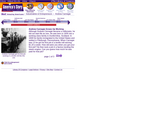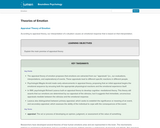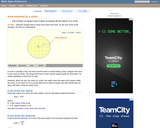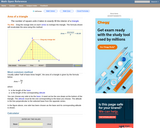
This article explores the 2,000 year old rice terraces in the Philippines.
- Subject:
- Social Studies
- Material Type:
- Reading
- Provider:
- Maptia
- Date Added:
- 12/05/2017

This article explores the 2,000 year old rice terraces in the Philippines.

This resource provides students with the rags to riches story of Andrew Carnegie who earned his wealth from hard work. Carnegie became a powerful businessman and a leading force in the American steel industry. Today, he is remembered as an industrialist, millionaire, and philanthropist. Carnegie believed that the wealthy had an obligation to give back to society, so he donated much of his fortune to causes like education and peace.

Students will learn about an animal and complete a graphich organizer to show their understanding.

In this lesson from readwritethink.org, students learn about the differences between fiction and nonfiction text with animals as the main focus.

This 11-slide PowerPoint presentation presents a short succession of schematic diagrams illustrating the structural evolution of anorthosites. The slides discuss the relative abundance of rare earth elements, describe six types of anorthosite occurrence, and contain pictures showing anorthositic texture. This resource is part of the Teaching Petrology collection. http://serc.carleton.edu/NAGTWorkshops/petrology03/index.html

This informational text explains that while both the Arctic and Antarctica are cold, Antarctica is much colder and drier - a polar desert. The text is written at a grade four through grade five reading level. This is a PDF containing the informational text and a glossary.

This article describes a discovery of moss and ostracod fossils that led to a better understanding of Antarctica's climate history.

This resource provides details about Antifederalists and their role in the ratifying of the Constitution.

This resource provides details on the growth of antigovernmental militia groups.

The Folger Shakespeare Library provides the full searchable text of "As You Like It" to read online or download as a PDF. All of the lines are numbered sequentially to make it easier and more convenient to find any line.

This resource provides information about the city of Apex, NC. A video highlights the historical, environmental, and recreational activities the city offers.

This resource explains the main premise of appraisal theory.

This online article describes aquifers as a source of freshwater located below the surface of the earth. The movement of water into and out of aquifers is also discussed.

The Bedouins of ancient Arabia and Persia made poetry a conversational art form. Several poetic forms developed from the participatory nature of tribal poetry. Today in most Arabic cultures, you may still experience public storytelling and spontaneous poetry challenges in the streets. The art of turning a rhyme into sly verbal sparring is considered a mark of intelligence and a badge of honor. Students will learn about the origins and structure of Arabic Poetry.

An interactive applet and associated web page that demonstrate the area of a circle. A circle is shown with a point on the circumference that can be dragged to resize the circle. As the circle is resized, the radius and the area computation is shown changing in real time. The radius and formula can be hidden for class discussion. Applet can be enlarged to full screen size for use with a classroom projector. This resource is a component of the Math Open Reference Interactive Geometry textbook project at http://www.mathopenref.com.

An interactive applet and associated web page that deals with the area of a kite, (a quadrilateral with two distinct pairs of equal adjacent sides). The applet shows a kite and the user can reshape it by dragging any vertex. The other vertices move automatically to ensure it always remains a kite. As the vertices are dragged, the area is continuously recalculated and displayed. The kite is filled with a grid of unit squares so that the students can estimate the area. The on-screen calculation can be hidden until the estimates are done. The web page lists two different ways to compute the area of a kite. Applet can be enlarged to full screen size for use with a classroom projector. This resource is a component of the Math Open Reference Interactive Geometry textbook project at http://www.mathopenref.com.

A web page and interactive applet showing the ways to calculate the area of a parallelogram. The user can drag the vertices of the parallelogram and the other points change automatically to ensure it remains a parallelogram. A grid inside the shape allows students to estimate the area visually, then check against the actual computed area, which is continuously recomputed and displayed. The text on the page gives three different ways to calculate the area with a formula for each. The applet uses one of the methods to compute the area in real time, so it changes as the rhombus is reshaped with the mouse. A companion page is http://www.mathopenref.com/parallelogram.html showing the definition and properties of a parallelogram Applet can be enlarged to full screen size for use with a classroom projector. This resource is a component of the Math Open Reference Interactive Geometry textbook project at http://www.mathopenref.com.

A web page and interactive applet showing the ways to calculate the area of a trapezoid. The user can drag the vertices of the trapezoid and the other points change automatically to ensure it remains a trapezoid. A grid inside the shape allows students to estimate the area visually, then check against the actual computed area. The text on the page gives three different ways to calculate the area with a formula for each. The applet uses one of the methods to compute the area in real time, so it changes as the trapezoid is reshaped with the mouse. A companion page is http://www.mathopenref.com/trapezoid.html showing the definition and properties of a trapezoid. Applet can be enlarged to full screen size for use with a classroom projector. This resource is a component of the Math Open Reference Interactive Geometry textbook project at http://www.mathopenref.com.

An interactive applet and associated web page that explain the area of a triangle. The applet shows a triangle that can be reshaped by dragging any vertex. As it changes, the area is continually recalculated using the 'half base times height' method. The triangle has a fixed square grid in its interior that can be used to visually estimate the area for later correlation with the calculated value. The calculation can be hidden while estimation is in progress. The text page has links to a similar page that uses Heron's Formula to compute the area. Applet can be enlarged to full screen size for use with a classroom projector. This resource is a component of the Math Open Reference Interactive Geometry textbook project at http://www.mathopenref.com.

Stay smart around the house. This resource gives tips on fire prevention.